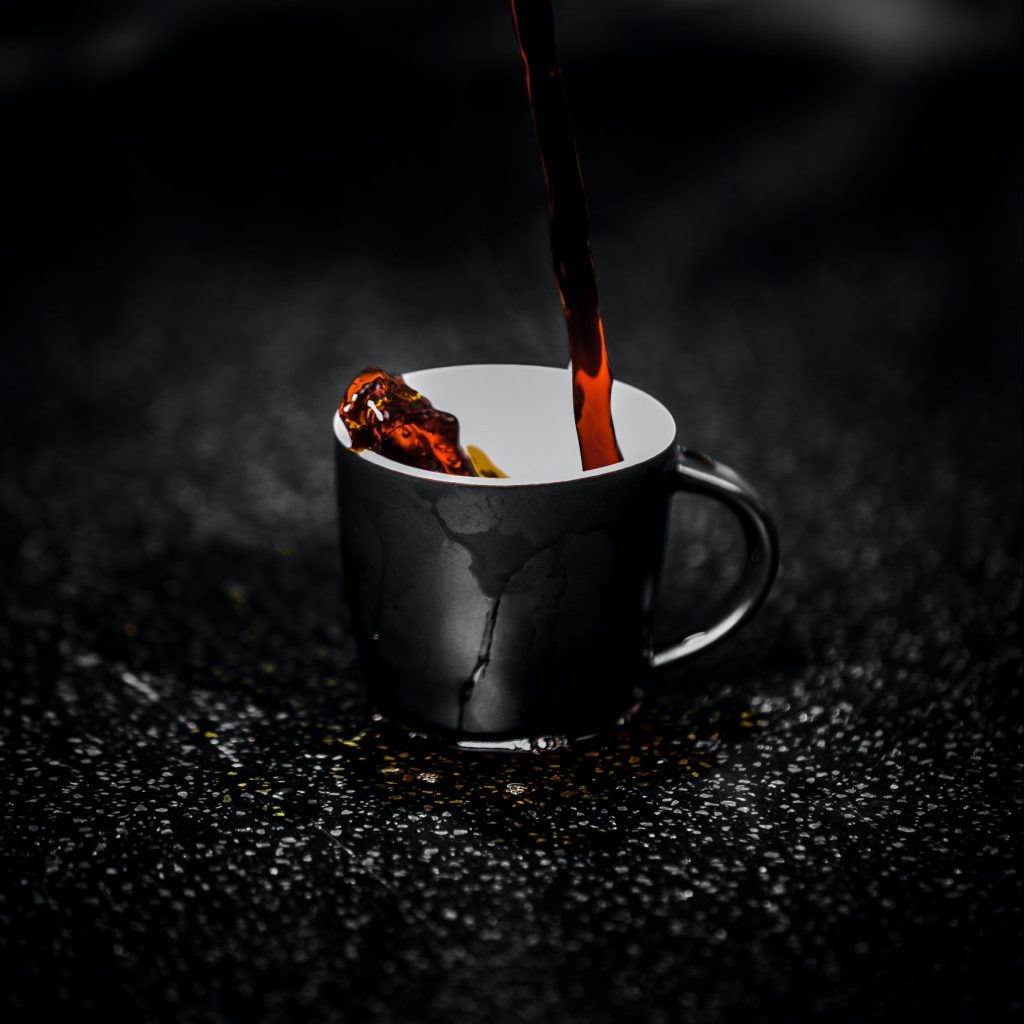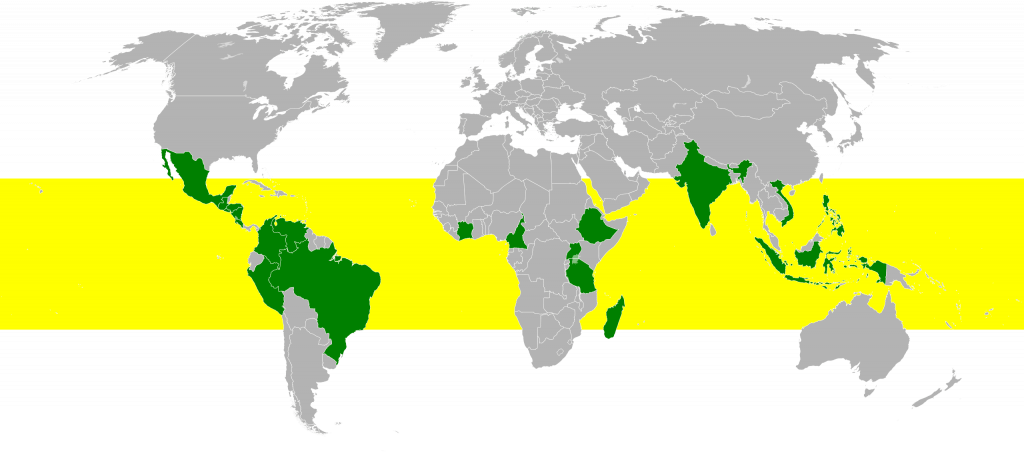BLOGS
A Beginner’s Guide to the Art of Coffee Tasting
 Get your favorite cup of coffee from Coffee Project in Crosswinds Tagaytay and have your coffee tasting there too!
Get your favorite cup of coffee from Coffee Project in Crosswinds Tagaytay and have your coffee tasting there too!
If there is one thing that people from all over the world would be able to agree on, it would be the universal love for coffee. We can all agree that coffee is the one drink that fuels our day-to-day lives. It is so essential to some people that their coffee reflects their personality. To fully appreciate coffee and its intricacies, we have the art of coffee tasting.
Suggested read: How to Set Your Own Coffee Station at Home | Luxury Homes by Brittany
We can get overwhelmed with the different types of coffee beans available at coffee shops. There are bean blends, single origins, robusta, arabica, and more. To someone that only started their coffee journey, this would all just taste the same– like coffee. But did you know that coffee is not just always darkness and bitterness?
When we think of coffee, we always think of it as just a cup of dark liquid bitterness, but like wine, it is also full of flavor notes that need training. On your first try, coffee cupping can be difficult to discern the different coffee flavors that different coffee can offer. Just like in wine, we can find food pairs to enhance the natural flavors of coffee.
This guide will help you get started on your journey of becoming coffee lovers!
 A cup of coffee can hold a lot of flavors. | Photo from Pexels
A cup of coffee can hold a lot of flavors. | Photo from Pexels
Before we can start with coffee tasting, we must understand what affects the tastes of coffee. There are so many things that affect the flavor profile of coffee. Understanding specialty coffee is a skill that can be learned by anyone. Today, we’ll focus on two aspects that can affect the flavor of the coffee we drink.
Coffee Origin

Where the coffee comes from affects the flavor of coffee when coffee cupping. The different levels of elevation, heat, and soil composition greatly affect the final tastes. The grind and the way the beans are roasted is also a factor affecting our cupping.
There are 62 coffee-growing countries and most coffee can be grown between the Tropic of Cancer and the Tropic of Capricorn near the equator. This area is called the coffee belt or as some people would call it, the bean belt. The coffee belt is divided into three major regions. These are Africa, Latin America, and Asia/Pacific. Let’s see how they differ from one another.
 Sorting coffee in Ethiopia. Roasting can also be done here. | Photo from Pexels
Sorting coffee in Ethiopia. Roasting can also be done here. | Photo from Pexels
Africa
Coffee in Africa comes from the countries of Rwanda, Kenya, Ethiopia, and Uganda to name a few. Africa produces some of the world’s most exotic coffees. It is also said that the history of bean coffee can be traced back to the coffee trees in the vast African landscapes under the wide-open skies. A thousand years after the discovery of coffee, Africa still produces one of the best coffees imaginable. When coffee cupping, the typical flavor profile of African beans is fruity, floral, and citrus. These coffees are best paired with fruity sweetness.
 Coffee Plantation in São João do Manhuaçu City – Minas Gerais State – Brazil
Coffee Plantation in São João do Manhuaçu City – Minas Gerais State – Brazil
Latin America
Latin American coffee makes up a third of the coffee production around the world. Latin America’s many active volcanoes, high altitude, mild climate, and dependable dry and rainy seasons ensure that the beans from this region are consistently flavorful. Latin American countries like Guatemala produce some of the finest coffees in the world. When coffee tasting, the typical flavor profile of Latin American beans are the well-balanced tastes of cocoa, nuts, and the crisp, bright acidity.

Kapeng Barako beans from the Asia-Pacific region, specifically in Tagaytay, Cavite where you can also find Crosswinds that has some of the best coffee shops
Asia/Pacific
Coffee from the Asia/Pacific region has some of the world’s most distinctive flavors. With varying climates and topographies, you can expect complex flavors in coffees from this region. Some of the largest coffee producers are from Asia/Pacific. Coffee in the Philippines in particular is known for its robusta production. The typical flavor profile of Asia/Pacific coffee is its spicy, herbal notes, and balanced acidity. Coffee from this region is also known for its full body.
Types of Coffee Beans
Arabica
Arabica is the most popular coffee bean in the world. Over 60% of all coffee in the world came from an Arabica bean. These beans are grown in high altitudes with steady rainfall and plenty of shade. Arabica beans are known to be easy to care for making them a favorite among major coffee chains. Arabica coffee beans are full of complex and varied flavors and aromas.
Robusta
Robusta is the second most-produced coffee bean in the world. It is named robusta due to its hardy nature and its general immunity to a number of plant diseases. A lot of the coffee in the Philippines is known to be robusta because the robusta bean is best grown in hot climates with irregular rainfall. Robusta is known for its darker flavors and strong energy kick. It is also nice to note in coffee cupping that robusta has notes of chocolate flavor and a smooth texture.
Liberica
Liberica is one of the more difficult coffee beans to come by. Making up only about 2% of coffee production, Liberica can stand out in terms of rarity. It generally has a strong and unique flavor with hints of chocolate and smoke. It is also accompanied by hints of floral and spicy flavors. One of the most popular coffees in the Philippines is actually a Liberica– the Barako. It is grown in Cavite where the most Instagrammable cafes are located.
Excelsa
Although reclassified as a type of Liberica by the British botanist Aaron P. Davis, hardcore coffee enthusiasts would argue that Excelsa brings a different depth of flavor compared to the Liberia variant.
Suggested Read: A Guide to Coffee in Italy | Luxury Homes by Brittany Corporation
Roast
Another aspect of coffee that adds another layer of flavor to coffee is the way it is roasted. Knowing its roast type can help your flavor expectations. There are three types of roasts. These change the flavor drastically by changing the roasting time of every batch of beans. Did you know that ground coffee has different roasts?
Blonde
Blonde roasts have short roasting times thus creating a moderate light brown appearance. It is a preferred roast for some specialty roasters, and it highlights origin characteristics as well as complex acidity.
Medium
Most specialty coffee uses a medium roast. Its roast character is slightly muted acidity and enhanced origin character.
Dark
The least acidic of the three in terms of flavor. The dark roast coats the bean in its natural, shiny, oils. This roast emphasizes the roast characteristics rather than the origin and acidic flavor. It also gives an intense, smoky aroma that could easily wake you up. Espressos are usually made with a dark roast called an Italian roast. To feel like you got transported to Italy, Portofino has Italian-themed luxury houses that are perfect for that Italian, coffee cupping session.

Tasting Coffee: Bean Blend vs Single Origin
What are bean blend and single origin? These two are the types of coffee you can buy. When you get a bag of beans, a bean blend is a pack that includes beans from different countries or regions, and sometimes, roast. A bean blend creates a subtler, more balanced, flavor profile and it is usually made to achieve a unique flavor single-origin coffee can’t achieve. Single-origin on the other hand as the name would suggest comes from one specific farm. Single origins tend to have a more intense, unadulterated, flavor profile from the specific region. A single origin kapeng Barako would mean that that batch of Barako is from one single farm.
What to Look for When Coffee Cupping
Coffee tasting is a fun experience. When coffee cupping, there are four things to look out for aroma, acidity, body, and flavor. The perfect cup of coffee gets its taste from filtered water, the temperature of boiling water, and the way the beans were roasted. When using a French press, a coarse grind is the best in extracting taste. Cupping allows us to lessen how bitter the coffee is regardless of how the coffee was brewed.
You can smell the wonderful aromas of coffee as soon as you brew it. When your taste buds feel the warmth and the mouthfeel of the drink and you’ll be able to take your coffee appreciation even further. The taste of the first sip is always where the most pleasant flavor is.

Aroma
Aroma is the way the coffee smells. The aroma of coffee is directly related to the flavor of the coffee. Different coffee can have a nutty, smoky, spicy, earthy aroma note. An example of an earthy scent is the smell of pine trees.
Just like the aromas of the 35,000 pine trees in Crosswinds Tagaytay, your coffee can have the same comforting scent that will make you feel like you have your own exclusive sanctuary. Because coffee tasting is a sensory experience, starting with your sense of smell, you already have an expectation of how your coffee will taste.
Acidity
This is the sour flavor, the tart note, or the bright taste of coffee. Acidity hits the sides of your tongue’s taste buds the same way eating an orange would. Some blonde-roasted, African coffee has the most acidic flavor profile. These are usually described as bright and crisp with a clean finish.
Body
The body is the weight of the coffee on your tongue. How does it feel? Does it feel like your tongue is getting coated? The best comparison for this would be milk. Full-bodied coffee is akin to whole milk. Light-bodied coffee is comparable to non-fat milk, light, and non-lingering. The lingering remnant in the mouthfeel is affected by the oil content.

Flavor
The flavor is the way your coffee tastes. It can taste sweet or citrusy aftertaste. It can also have tastes of smokiness or sweetness. This is when you can taste maybe a hint of chocolate or floral notes. You can easily decide on what flavor you can taste by trying to feel where the flavor hits your mouth. Is there an aftertaste? More acidic coffees hit the sides while sweeter coffee hits the tip of your tongue. This takes time to master but is never impossible.
Did you know that used coffee grounds can be used as an exfoliant?
The Steps of the art of Coffee Tasting
Coffee tasting is simple. When doing it, we use plain, black, coffee with no cream or sugar. The purpose of sipping is to appreciate the natural flavors of the coffee as you would wine. To be able to fully appreciate the characteristics of coffee, we have four steps.
Suggested Read: 5 Steps to Make Barista-style Coffee at Home
Smell
Before tasting your coffee, smell it first. The nose can detect hundreds and thousands of different scents. Compared to the tongue that can only distinguish four tastes, the nose can detect even the most minute of aromatic flavors. To smell your coffee, cup your hand over the opening of your cup and hold it close to your nose. Inhale the scent deeply.
Slurp
This is where the cupping begins. When coffee tasting, we do not simply do sipping, we slurp the coffee. When we slurp, we spray the taste across your entire palate and it prevents you from getting burnt. Spraying the coffee all over your palate lets the subtle flavors coat your entire tongue allowing us to taste the complexity of the coffee.
Locate
Like what was said earlier, to ease the process of finding the flavors of the coffee, you can try and locate where the flavors hit your tongue. Do we sense sweetness? How does it feel in your mouth? Is it smooth? Does it have a sour or bitter aftertaste? How heavy or is it in your palate? What is the mouthfeel?
Describe
Lastly, describe it. You’ve already smelled and tasted it. How was your experience? Describe the aroma, acidity, body, and flavor. For an even more immersive experience, how did this coffee make you feel? Are these memories of experiences that you remember when you drink your coffee? Maybe the smell of soil after the rain or even your first kiss? What emotion of luxury can you feel? Coffee can evoke all of these feelings.
Coffee is one of the most magical drinks there is. It keeps us awake and we get to enjoy the intricate flavors of a good cup of coffee. We can drink it on the go or even when we’re relaxing in our luxury condominium.

We can take a break and celebrate our day-to-day lives in the comfort of our own luxury homes while cupping. We can even invite our friends over, but of course, we must always remember to keep our social distance.
A cup of coffee is not just about the flavor, aromas, or origins of coffee. It also brings the stories that we have and the emotions that it evokes from us together. Just like the luxury properties for sale of Brittany Corporation, it’s not all about how beautiful it is or how magnificent it can be. It is also about the memories that we’ll make and the feelings that we get when we live within our own luxury.
Learn more about how Brittany can inspire the stories you share in your own coffee tasting by contacting us at +63917 883 8103. You may also send us an inquiry on our properties for sale. Coffee and coffee tasting is a simple luxury. Live in your luxury with Brittany Corporation.
Up next: Travel from Home: How to Travel through Coffee
















 Sorting coffee in Ethiopia. Roasting can also be done here. | Photo from Pexels
Sorting coffee in Ethiopia. Roasting can also be done here. | Photo from Pexels Coffee Plantation in São João do Manhuaçu City – Minas Gerais State – Brazil
Coffee Plantation in São João do Manhuaçu City – Minas Gerais State – Brazil



